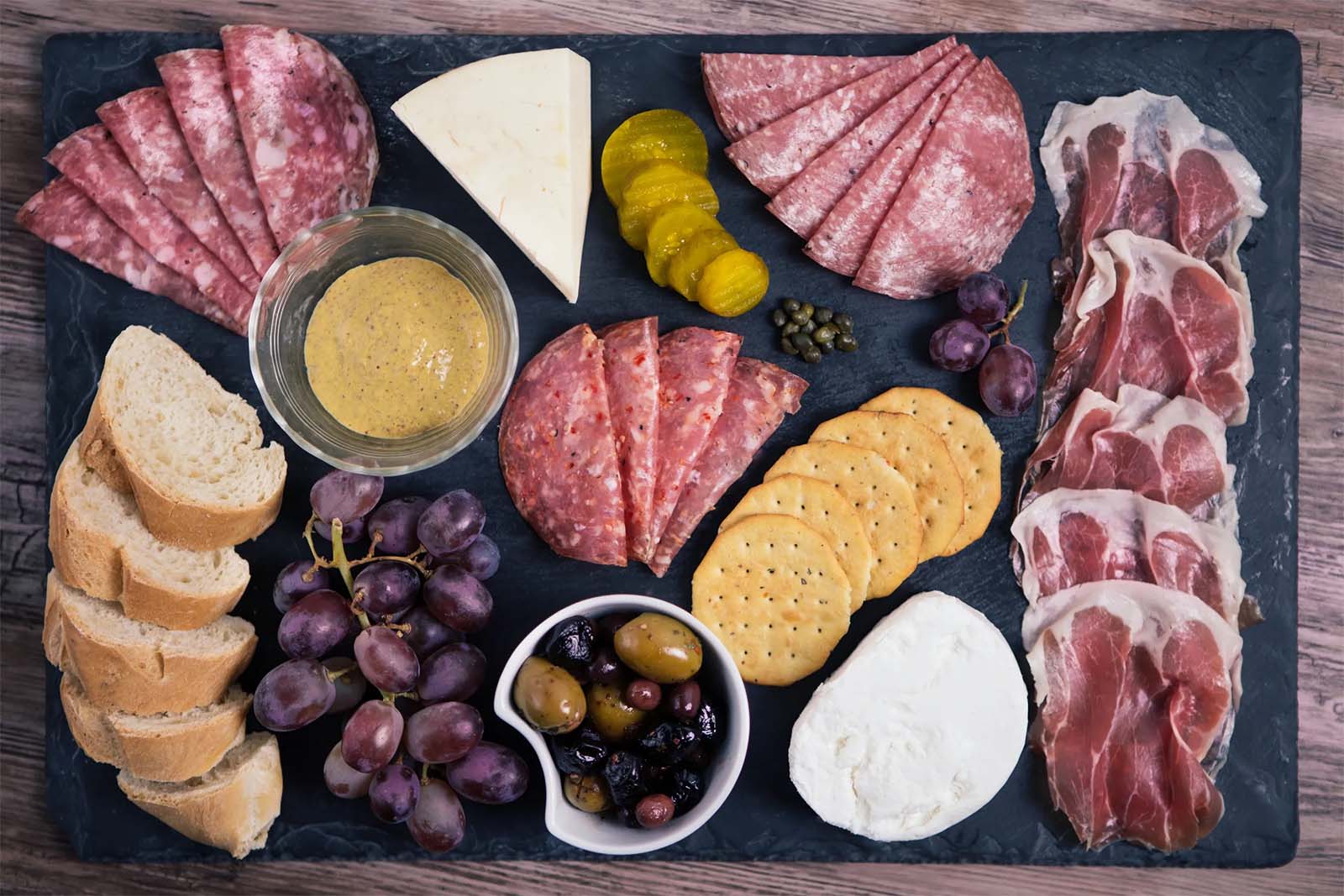
A charcuterie board, image courtesy of Parma Sausage in the Strip.
Exploring PA in a Tasty Way—Culinary Trails
This week we are excited to shine a spotlight on the Center for Regional Agriculture, Food, and Transformation (CRAFT) at Chatham University. The CRAFT team created four culinary trails for the Pennsylvania Department of Community and Economic Development—trails that highlight the foodways traditions in southwestern Pennsylvania and throughout the Commonwealth. In the article below, guest writer and Program Manager for CRAFT, Cynthia Caul, offers a taste of the Chopped trail.
By Cynthia Caul, Program Manager, CRAFT at Chatham University
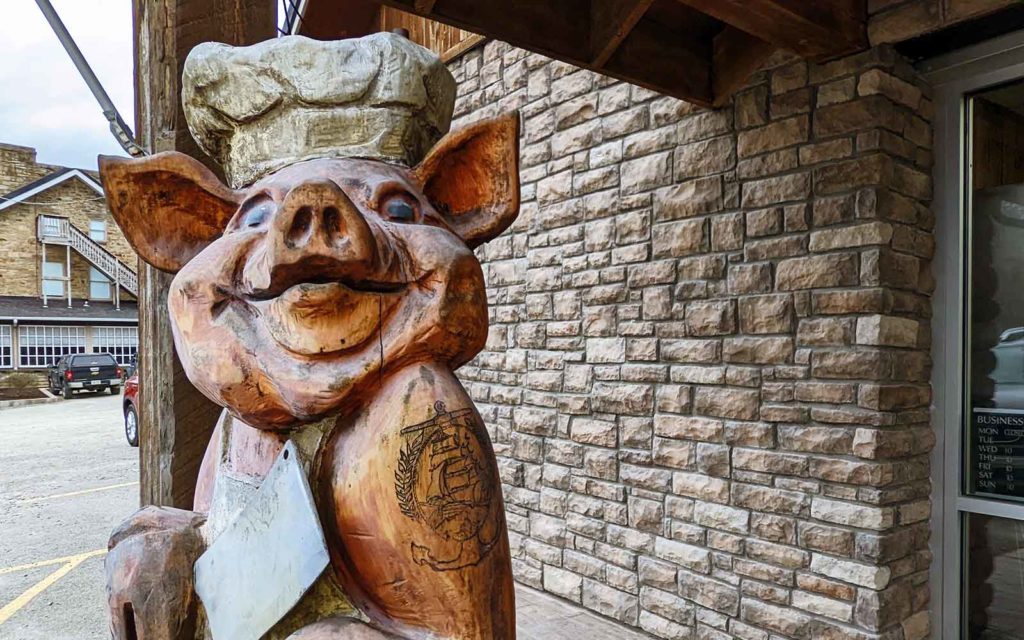
A pig greets shoppers at the Stone House Butcher and Provisions in Farmington, PA.
“Chopped: A Charcuterie Trail” is not just for Foodies
“Foodie” is one of those words that makes me cringe a little each time I hear it. I am personally referred to as a foodie fairly frequently, and it always elicits an awkward laugh with a gentle correction out of me. I am not a foodie, and you don’t need to be one, either, to enjoy Pennsylvania’s Chopped: A Charcuterie Trail.
The trail was first released back in the fall, along with three other culinary trails from the Pennsylvania Department of Community & Economic Development, and it was developed by regional culinary historian Mary Miller and by our team at Chatham University’s Center for Regional Agriculture, Food, and Transformation (CRAFT).
As spring finally emerges, it’s a perfect time to revisit these trails as you plan your long weekend or even just a day trip.
As I mentioned in my first blog when the trails launched, we developed each of these trails with a food systems approach, incorporating a variety of food growers and makers, as well as a diversity of individuals responsible for cultivating our food traditions historically and today. In the same way that we took this holistic approach in selecting the stops along the trails, we also hoped to create experiences that could be enjoyed by an equally inclusive community.
If you just Googled “charcuterie” to figure out what it means, this trail is still for you. Take it from a person who just Googled the word for the very same reason a short few years ago.
And if you didn’t just Google “charcuterie” but were planning to, let me make it easy for you: Google defines charcuterie as “cold cooked meats.” It’s a French word that directly translates to “pork-butcher’s shop” or “cooked pork meats.” Today, it refers to a wide range of cured meat products, many of which you are likely to be familiar with. It does not just entail meats spread on a beautiful tray or wooden boards. It is also that backyard smoked sausage or kielbasa. Personally, my family has been eating kielbasa at almost every special occasion for my entire life, but we never once referred to it as charcuterie.
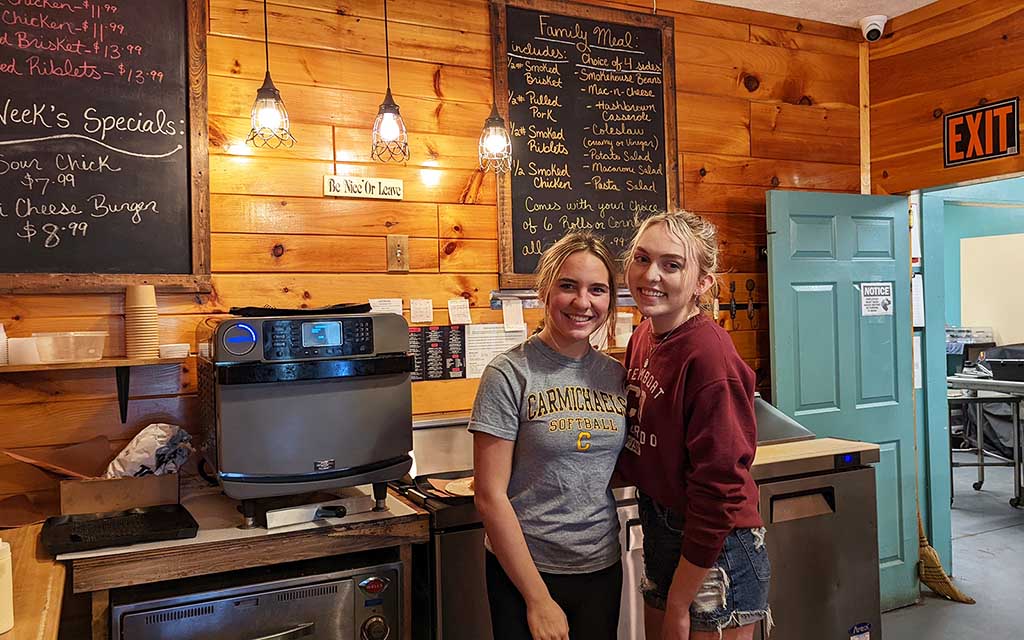
Sisters Ryleigh and Remi, whose family is friends with the owner’s family, work at the Hungarian Smokehouse.
So, if you read “charcuterie” and immediately associated it with an inaccessible or esoteric foodie trend, I hope you’re starting to reconsider (and if you already knew what it meant this whole time, I hope you’ll stick with us too).
Charcuterie certainly has been trending lately, but the practice of drying and curing meats dates back to the very first communities in what is known today as Pennsylvania as well as more broadly in North America. Many indigenous communities of this region made and continue to make jerky and are the inventors of pemmican, a mixture of dried meats, berries, seeds, and fat. Historically, this nutritious mix was invaluable to these communities during long winters and was adopted by many European colonizers upon their arrival here for the same reason.
Industrialization in the region throughout the nineteenth and twentieth centuries brought migrants from all over Europe and the world who carried with them their own traditions of drying and curing meats. The many who settled near the port in Philadelphia were often able to get imported meats from their countries of origin, maintaining their former food traditions here in the region. However, those who moved to more rural areas to work on railroads or in coal mines often adapted their traditions with ingredients that were readily available to them, creating new regional traditions.
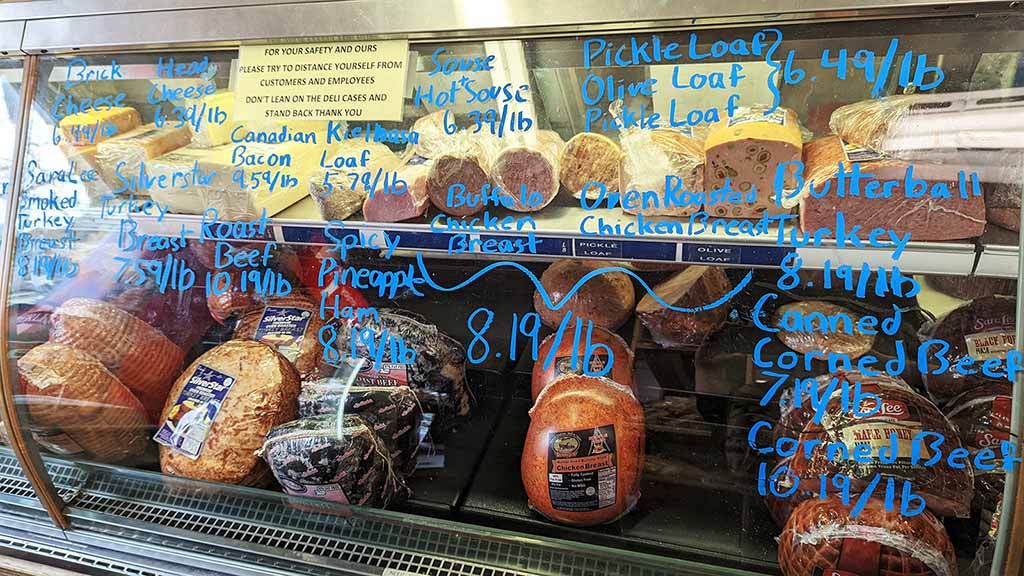
A selection of meat and cheeses at Silver Star Meats in McKees Rocks, Allegheny County.
Seasonality continued to play a significant role in meat preservation. Farmers often slaughtered their hogs and other animals in the late fall or early winter, as the cold weather made it possible for them to preserve the meat safely. Once preserved, the meat would sustain them through the winter when it was otherwise too cold to cultivate food. Farmers typically had smokehouses in their backyards in addition to smoking shelves in their chimneys. Some of these smokehouses still remain today, and you can see them for yourself as you drive through the Juniata River Valley on the part of the Chopped trail that runs through the central part of the state.
Like the Baked trail, the Chopped trail will give you a full experience of your food, providing an understanding of its history and how it ultimately came to be on your plate, including all of the stages in between. The trail will take you to farms where the animals are raised, meat auctions, supply stores where you can get everything you need to cure your own meats, workshops to teach you how, and places to purchase beautiful handmade trays and boards to serve them on.
The trail provides an opportunity to visit a myriad of local businesses where you can taste and take home a variety of products, including deer and elk jerky, ring bologna, chorizo, kielbasa, soppressata or “soupie,” and so much more.
Specifically, the western part of the trail takes you to neighborhoods and areas within and just beyond Pittsburgh, including the Strip District, Larimer, McKees Rocks, Brookline, Crafton, and the Laurel Mountains. Highlights include:
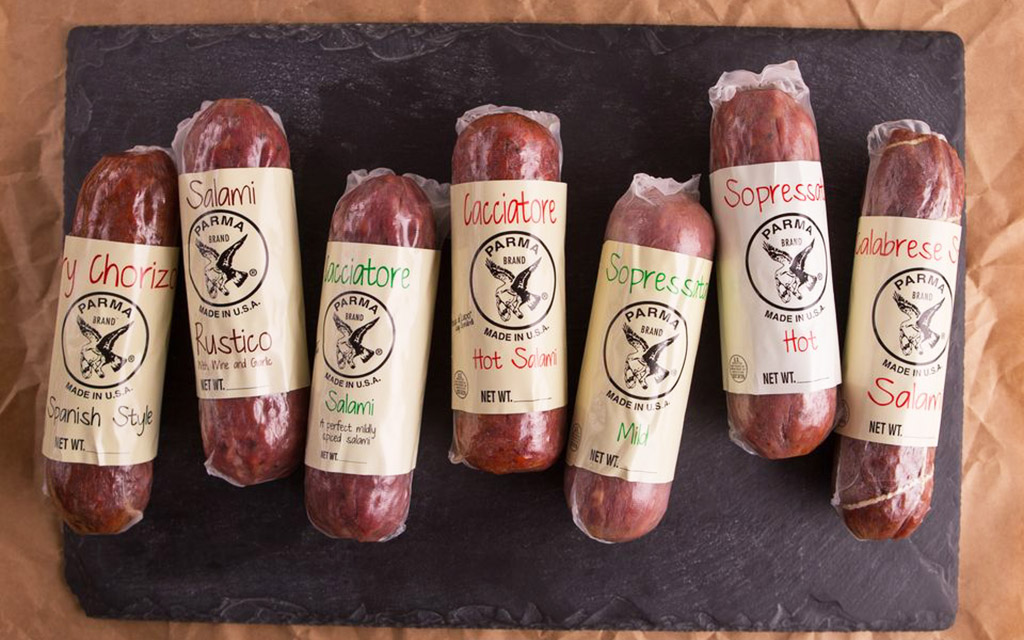
A wide variety of authentic Italian pork products are available from Parma Sausage. Images courtesy of Parma Sausage.
Parma Sausage Products, a nearly seventy-year-old, family-owned company specializing in cured Italian meats that operates on the same street where the very first prosciutto was cured in the United States.
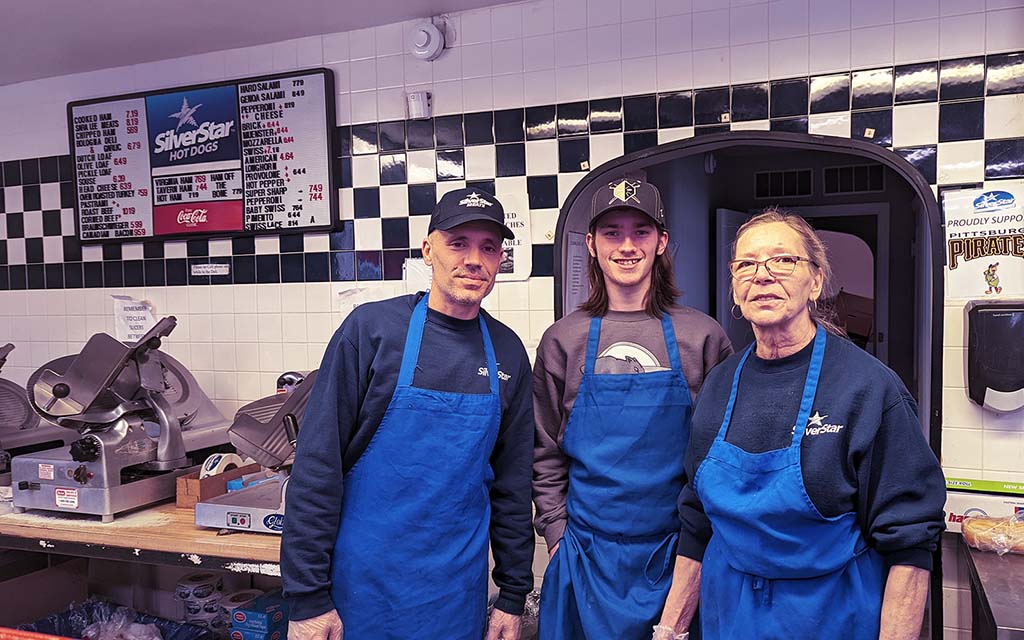
Mike, Brian, and Linda were working behind the counter at Silver Star on a recent Friday afternoon.
Silver Star Meats where owner Robert Germony is dedicated to preserving the recipes and memories of Pittsburgh’s Polish community, working with the many Polish delis that have closed their doors over the past decades to reproduce their recipes. For hunters, you can also get your own meat processed here.
Las Palmas Carniceria, where you can get both Spanish- and Mexican-style house-made chorizo from their meat counter in the back or tasty chorizo tacos from their stand out front.
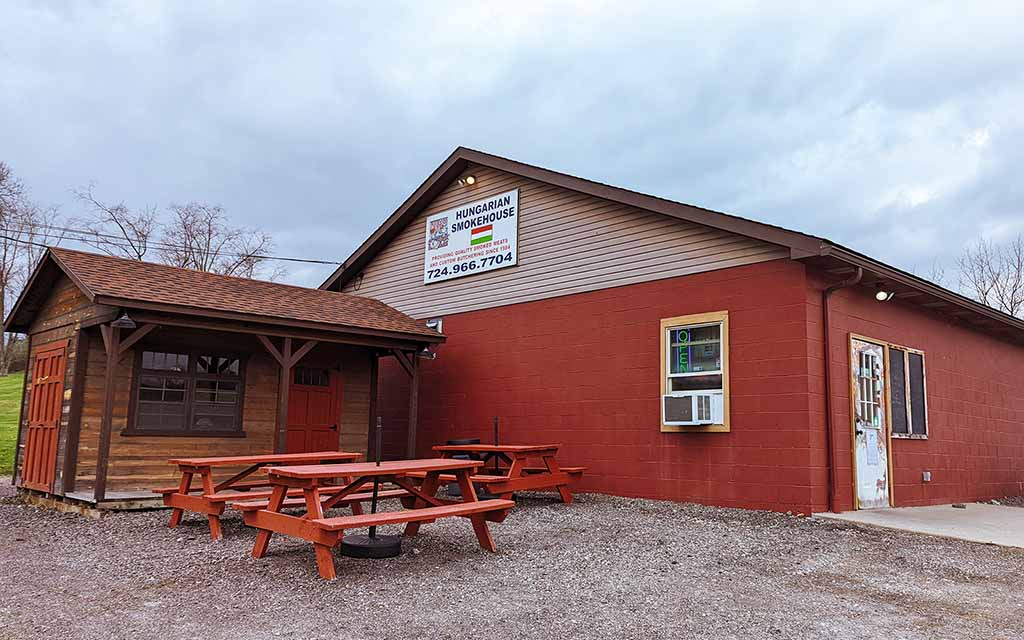
The Hungarian Smokehouse on Route 88 in Carmichaels, Greene County.
Hungarian Smokehouse, where they carry a vast variety of jerky, beef sticks, kielbasa, pickled eggs and vegetables, smoked cheeses, and more.
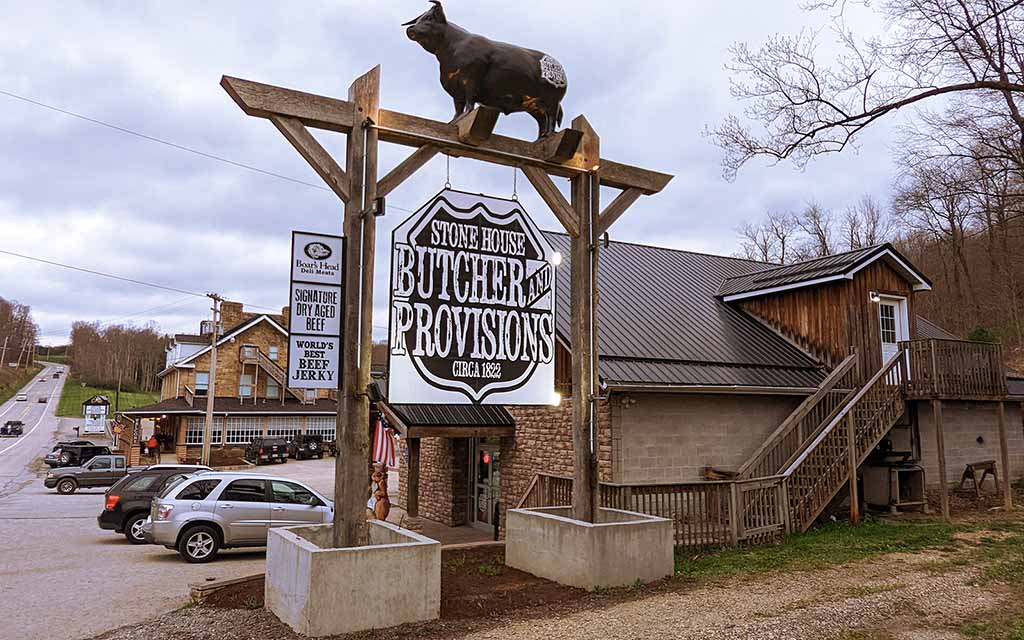
The Stone House Butcher and Provisions offers grass-fed beef from their own farms, along with other products. It is situated on the historic National Road (Route 40) in Fayette County.
Stone House Butcher and Provisions in the scenic Laurel Mountains near Fayette Springs, which includes an inn, restaurant, butcher shop, and barbecue hut.
You can see the full-length trail on the visitPA website.
Whether you consider yourself a foodie or not, plan your trip today. This trail is for all meat-eaters.
And remember to bring a cooler!
About CRAFT
The Center for Regional Agriculture, Food, and Transformation (CRAFT) works to support robust regional food systems that are equitable, inclusive, and sustainable in Western Pennsylvania and beyond.
CRAFT works with a number of regional partners to develop culinary trails that support economic development particularly in our region’s rural communities.
These trails aim to highlight the rich heritage and food traditions of the region, as well as include the history and culture of all of the area’s historical and current residents. We take this inclusive approach in order to acknowledge, learn, and inform about the fraught and complex history of land ownership and food production in our region and country, recognizing and celebrating the contributions of displaced indigenous and enslaved peoples.
The trails provide regional farms and food businesses with increased markets and promotional opportunities, as well as providing tourists with a deeper understanding of the regional food system and the unique value and history of the food grown and prepared within it.
 Cynthia Caul is the program manager for CRAFT at Chatham University and graduate of the University of Pittsburgh’s Graduate School for Public and International Affairs, where she studied International Development. Cynthia’s research has focused on food and nutrition security, land access, and the role of agricultural smallholders in an increasingly globalizing economy. She also worked at the Ford Institute for Human Security, conducting research on human rights-based approaches to improving agricultural land access for women farmers and was the 2017 recipient of the Simon Reich Human Security Writing Award. Prior to her current role, Cynthia worked on public health programming in Ghana with the U.S. Peace Corps.
Cynthia Caul is the program manager for CRAFT at Chatham University and graduate of the University of Pittsburgh’s Graduate School for Public and International Affairs, where she studied International Development. Cynthia’s research has focused on food and nutrition security, land access, and the role of agricultural smallholders in an increasingly globalizing economy. She also worked at the Ford Institute for Human Security, conducting research on human rights-based approaches to improving agricultural land access for women farmers and was the 2017 recipient of the Simon Reich Human Security Writing Award. Prior to her current role, Cynthia worked on public health programming in Ghana with the U.S. Peace Corps.
If you’d like to know more about the culinary trails, check out her first post in this series, which features the Baked Trail.
All photos by Rivers of Steel, unless otherwise noted.







